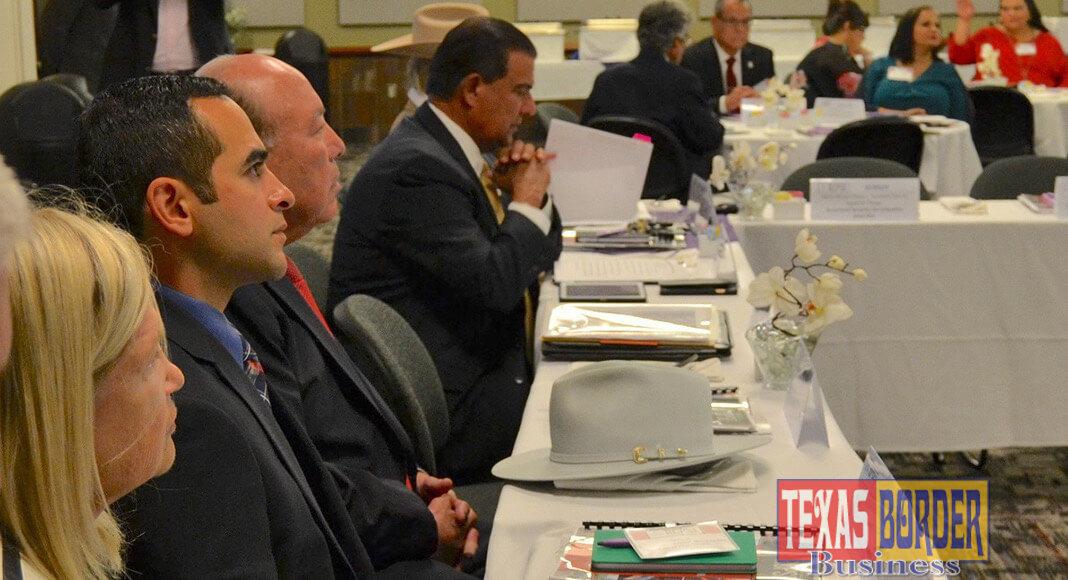
Texas Border Business
McAllen, Texas – Law enforcement professionals have begun offering their recommendations for identifying and developing training programs as the new Regional Center for Public Safety Excellence (RCPSE) gets underway.
Law enforcement from across the region offered their input at the first President’s Advisory Council Luncheon on April 27.
“Two key words are critical in the name,” said STC President Dr. Shirley A. Reed. “One is regional. Two is that it will be built on excellence. We want to maintain that focus on regional activity, and doing it with excellence. This is a concept that Dean Mario Reyna and I have been talking about for probably 20 years.
“Why can’t we put together a training facility that can meet the needs of all of our local public safety law enforcement professionals, state, and federal level?” Dr. Reed said. “It’s finally getting some traction.”
President Reed recently extended an invitation to leaders of the law enforcement community for inclusion on the Advisory Council. The Council will now provide regular input and recommendations for professional continuing education and degree programs.
State Sens. Juan “Chuy” Hinojosa, D-McAllen, and Eddie Lucio Jr., D-Brownsville, made opening remarks at the luncheon. Representatives from federal agencies in attendance included Laredo Field Operations Director David Higgerson; and RGV Customs and Border Protection Sector Chief Manuel Padilla.
Representing local police departments on the Council are McAllen Chief Victor Rodriguez; Mercedes Chief Olga Maldonado; Mission Chief Robert Dominguez; Pharr Interim Chief Jose Luengo; Rio Grande City Chief Noe Castillo, and Weslaco Chief Joel Rivera.
“There are challenges that law enforcement has that the public doesn’t quite grasp. One of those challenges is training,” Sen. Hinojosa said. “As we grow our law enforcement, we need to find ways to train them adequately not only to protect themselves but to defend the public.
“In addition, we don’t want our law enforcement professionals to leave the Valley for training,” Hinojosa said. “We want to provide that here, and provide everything that is needed to have excellence in understanding the responsibilities of our law enforcement.”
Together with its partners, including Valley cities and law enforcement agencies, STC has developed a $71.28 million long-range master plan for building its RCPSE in three phases.
Located at 4300 S. Cage Blvd. in Pharr, the RCPSE will make STC the first border community college in the nation to establish integrative training for local, state and federal professionals in law enforcement, public safety, fire safety and Homeland Security along the US/Mexico border.
“I’m really honored to join so many of our local, county, and state leaders to work with the improvement of the Regional Center for Public Safety Excellence. I feel like I am at home here in your presence because my dad was in law enforcement for 30 years. Law enforcement has a very special place in my heart,” Sen. Lucio said. “At the opening of the Regional Center last year, I was pleased to join the stakeholders from the education and law enforcement and economic development fields who all share an interest in the safety of the region and its residents.
“I said then that leveraging our shared resources to achieve shared goals would be an effective strategy for nourishing a safe and vibrant community, which I think we have at this time,” Lucio said.
The $71 million master plan is slated to transform the RCPSE into a Public Safety, Law Enforcement, Fire Science and Homeland Security campus by 2030. The facility is located on a 64-acre site in Pharr with 180 additional acres available for future expansion. The master plan includes 534,385 square feet of buildings, structures, and a driving track to be completed in three phases over the next decade.
Phase One includes a $9.9 million investment. Set for completion this fall, it includes a training center, driving/skills pad, shooting simulation lab and a driving simulation lab.
Phase Two includes $10.6 million investment for fire science and Homeland Security. It includes a multi-story fire training structure, two-story residential training structure and confined space/search and rescue training area. This phase also includes the EVOC, a cityscape with non-lethal training capacity, and a covered shooting range with firearm training classroom.
Phase Three is a $50.6 million investment in Integrative Homeland Security, which will add a physical plant and expansive growth with new education and student services buildings.













